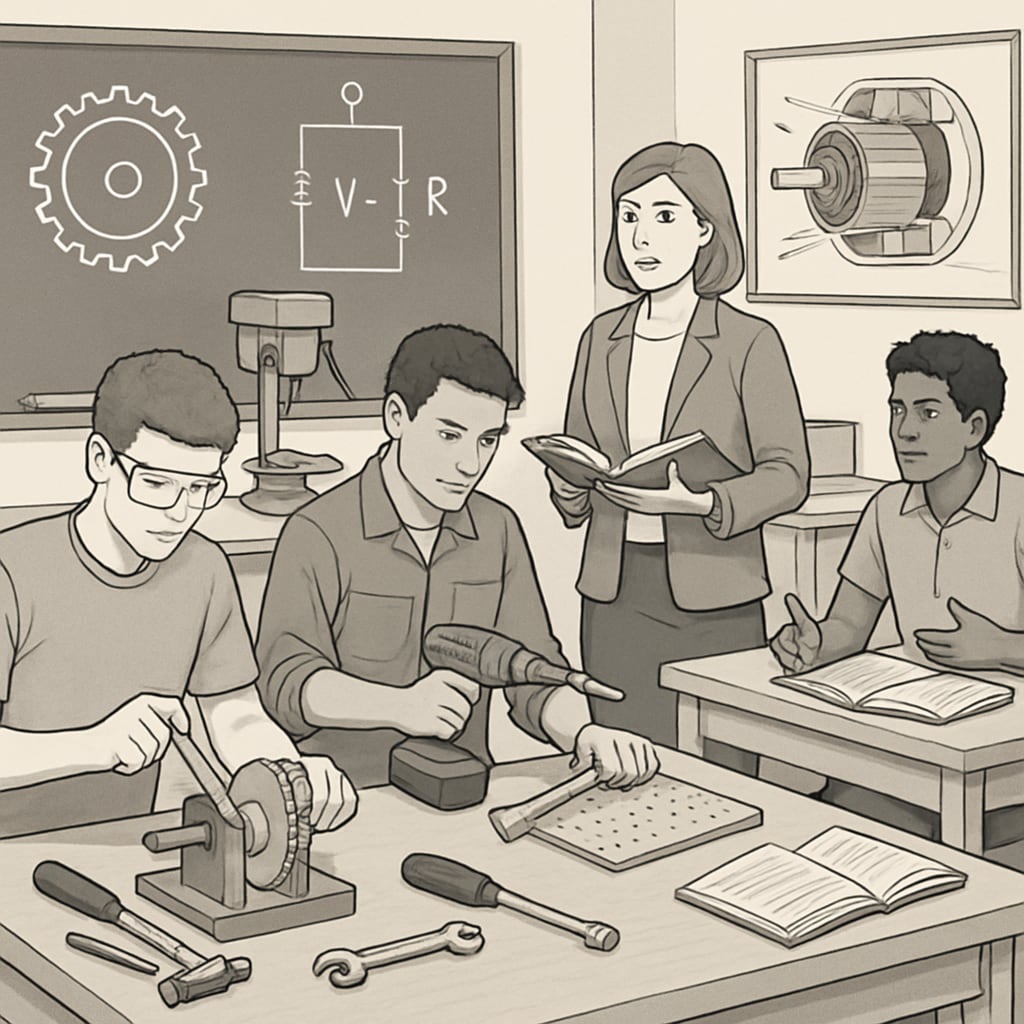The modern K12 education system faces a critical challenge: achieving a balance between vocational education, academic balance, and educational structure. As the demands of the global workforce evolve, schools are increasingly tasked with equipping students not only with traditional academic knowledge but also with practical, career-ready skills. This article delves into the symbiotic relationship between vocational education and traditional academics, examines successful implementation models in various school districts, and provides actionable insights for creating an integrated curriculum that supports holistic student development.
Why Vocational Education and Traditional Academics Must Coexist
In today’s fast-paced and technology-driven world, the traditional dichotomy between vocational education and academic subjects is no longer sufficient. Vocational education (hands-on training for specific trades or industries) and traditional academics (core subjects like mathematics, literature, and science) are not mutually exclusive. Instead, they complement each other in preparing students for life beyond school.
For example, industries such as healthcare, engineering, and information technology increasingly require employees who possess both technical expertise and critical thinking skills. According to a Britannica article on vocational education, this dual focus helps bridge the gap between theoretical knowledge and real-world application.
Furthermore, exposing students to vocational pathways early on can enhance engagement and motivation. When students see the relevance of academic concepts through practical application, their retention and interest levels improve significantly. As a result, integrating vocational education into the traditional curriculum helps foster lifelong learning and adaptability—qualities essential for navigating the complexities of modern careers.

Strategies for Achieving Balance in Educational Curricula
Creating a balanced curriculum that integrates vocational education with traditional academics requires thoughtful planning and execution. Below are some effective strategies for achieving this balance:
- Cross-Disciplinary Projects: Design projects that combine academic concepts with vocational skills. For example, a science class could collaborate with a design technology course to build a working model of a renewable energy system.
- Career Exploration Programs: Introduce career pathways early in education through job shadowing, internships, and guest lectures from industry professionals.
- Flexible Scheduling: Allow students to customize their timetables to include both academic and vocational classes without overburdening them.
- Teacher Collaboration: Encourage academic and vocational educators to collaborate on curriculum design, ensuring both theoretical and practical aspects are covered.
- Use of Technology: Leverage digital tools to simulate real-world scenarios, enabling students to apply academic knowledge in vocational contexts.
These strategies not only enhance the learning experience but also ensure that students are better prepared for diverse career opportunities.

Case Studies: Successful Integration Models
Several educational institutions worldwide have successfully implemented integrated education models. For instance, Germany’s dual education system combines classroom instruction with paid on-the-job training, creating a seamless transition from school to the workforce. Similarly, the United States’ Career and Technical Education (CTE) programs offer students hands-on experiences in fields such as healthcare, IT, and skilled trades while maintaining a strong academic foundation.
These models demonstrate that blending vocational and academic education is not only feasible but also beneficial. By tailoring these approaches to local needs and resources, other school districts can replicate their success.
The Future of Education: A Holistic Perspective
As the world continues to change, the importance of integrating vocational education and traditional academics will only grow. Schools must adopt a holistic perspective, recognizing that a well-rounded education equips students to thrive in a variety of contexts—whether in higher education, the workforce, or entrepreneurial ventures.
By fostering partnerships between schools, industries, and policymakers, we can create an education system that values both academic rigor and practical skills. This balanced approach not only enhances individual potential but also contributes to a more dynamic and resilient society.
In conclusion, achieving a balance between vocational education, academic balance, and educational structure is essential for nurturing the next generation of innovators, thinkers, and doers. By embracing integration, we can ensure that students are prepared to meet the challenges and opportunities of the 21st century head-on.
Readability guidance: This article uses short paragraphs, incorporates lists to summarize key points, and employs transition words to enhance readability. The strategies and case studies provide actionable insights, making the content accessible and engaging for a wide audience.


